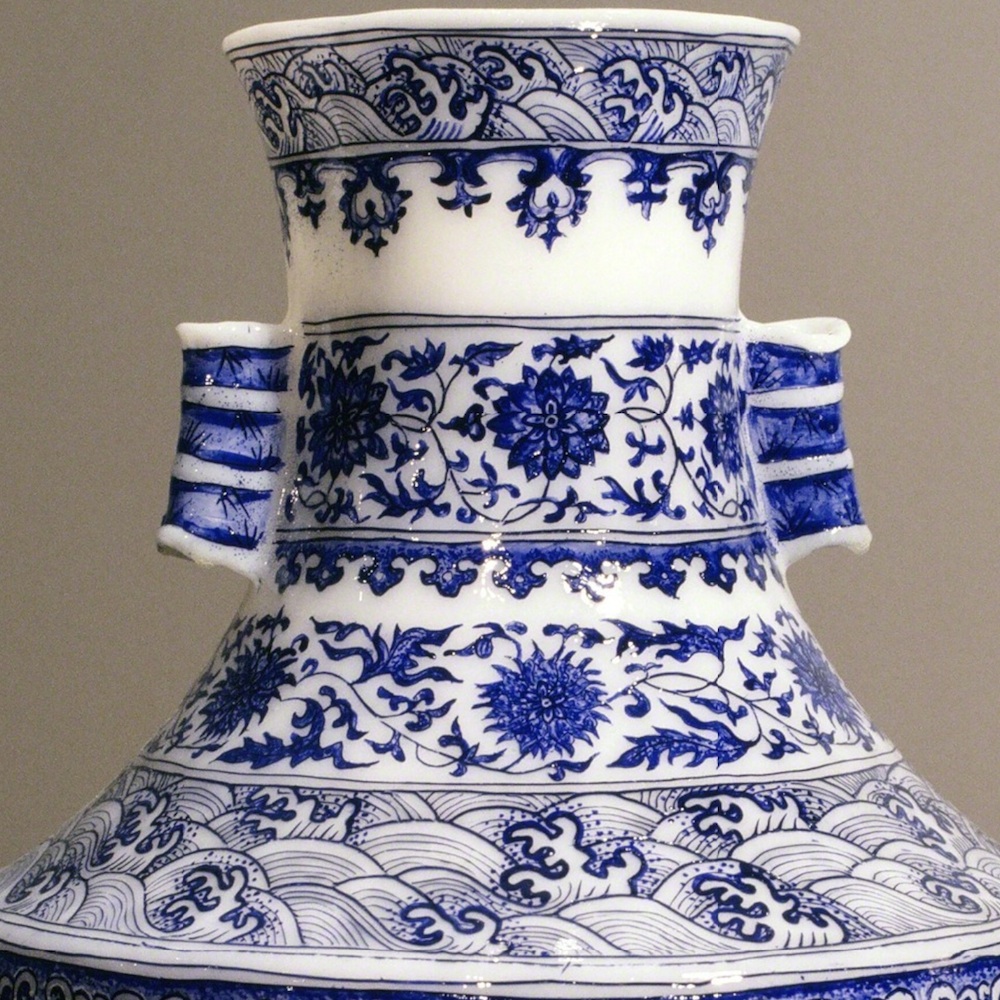KOREA — We repeat certain facts about contemporary ceramic art so many times that they start to lose meaning. For example, ceramics are having a “moment” right now, in case Lena Dunham and a million other art gawkers haven’t told you. Another fact that is in danger of platitudinalization is that European porcelain was adapted from artisans from the East. We hear this fact so many times we often take it as rote and don’t contemplate the significance of an artform that traveled continents in the ages before mass communication.

Meekyoung Shin, Translation Series, 2009 soap, pigment, varnish and wooden crate, 14 1/5 x 9 2/5 x 9 2/5 inches. Click to see a larger image.

Meekyoung Shin, Translation Series, 2013; soap, pigment, varnish and wooden crate, 16 1/2 x 8 7/10 x 8 7/10 inches. Click to see a larger image.
Korean artist Meekyoung Shin (b. 1967) has an ongoing project, Translation, which explores this path porcelain took on its way to the West. Material and concept work together to help us see porcelain’s history with fresh eyes. It’s the kind of thesis that succeeds without several thousand words backing it up. From Shin’s biography on Artsy:
Meekyoung Shin, who trained in the classical tradition of European sculpture, is known for her ongoing “Translation” project, which explores the processes of translation and mutation—both literal and figurative—undergone by cultural objects that have been subjected to a change in location. Her “Translation Vases” (2009), for example, are soap facsimiles of Chinese originals created for the European market in the 16th through 20th centuries, painstakingly colored, carved, and painted and displayed on shipping crates. For Shin’s “Kouros” series (2009), she modeled archaic and classical sculptures in soap, preserving their cracks, missing limbs, and other defects.
The Guardian puts a finer point on it:
To western eyes, her vases, based on Chinese porcelain made between the 16th and 20th century, are quintessentially Chinese. In fact, the work they reference was created solely for a European and, later, an American market, but had little to do with the life of ordinary people in China.
It’s this kind of cultural translation that interests Shin: the rifts that occur when something that’s created organically in one country gets uprooted and placed, out of context, somewhere else.
I like her choice of soap as a medium. Porcelain feels too immutable for this type of thesis. Soap is malleable, it is slightly different every single time it is used. It is the perfect material to chart the evolution of one of the earliest global phenomena.
Bill Rodgers is the Managing Editor of cfile.daily.
Do you love or loathe these works of contemporary ceramic art? Let us know in the comments.






Add your valued opinion to this post.